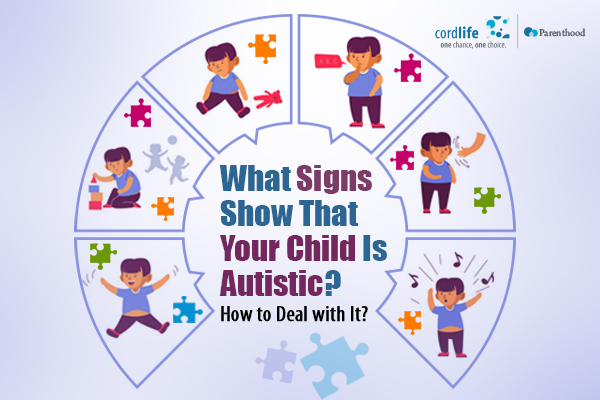Table of Contents
Autism is usually described as a spectrum disorder because the signs, symptoms, and abilities are different for each patient. And it can be tough to diagnose initially. Most kids with ASD apparently have a usual infanthood and parents are unable to detect any significant warning sign. They sit, crawl, eat, and sleep like any other baby. Autism, in most cases, gets diagnosed only after 18 months of age, when social differences start getting noticed. Hence, parents need to keep an eye out for certain early signs to get their little ones help on time.
Early Signs of Autism in Babies
- Babies usually make eye contact by the age of 2 months. So, make a note if your baby is above two months of age and still unable to make eye contact.
- Babies usually start following an object with their eyes if you point at it. If they are not doing so, it might indicate autism.
- By the age of 6 months, babies recognize their own names and often respond when their name is called. If a child doesn’t respond when their name is called even after 9 months, it could be a warning sign.
- Often a pattern of non-response is noticed in a baby with autism.
- Lack of emotion in facial expression is another red flag. An autistic kid doesn’t necessarily feel less emotion, but they are unable to express it through facial expression.
- Delayed speech is another sign. If a child is not saying a single word by 16 months or has not started saying double-letter words by the age of 2 years, it is better to consult a doctor.
- Regression is a major indicator of autism using human stem cell. Most autistic babies start losing the skills that they had learned once. For example, they stop babbling, or making eye contact, or forget pointing at objects. Some toddlers pick up few words but gradually stop using them.
Now, since parents and caregivers are often unable to recognize the early signs, most kids get diagnosed after they turn two. So, seek medical help if you notice any of the following social or behavioral problems:
- Prefers to play alone
- Does not share toys
- Interacts less
- Lack of facial expressions
- Resists physical contact
- Does not understand personal boundary
- Has difficulty understanding or expressing feelings
- Avoids eye contact
- Repeats the same phrase over and over, also known as echolalia
- Interacts in a robotic manner
- Displays repetitive behavior like rocking, spinning, flapping hands etc.
- Loves routine and gets upset when the routine is broken
How to Deal With Autism
Depending on the condition of your child, various therapies can help you in dealing with the disorder.
- Cognitive Behavioral Therapy (CBT)
- Behavioral Management Therapy
- Social Skills Training
- Speech Therapy
- Diet Modification
- Occupational Therapy
- Medicine
- Stem Cell therapy
Stem Cell therapy is a brand-new ray of hope for autism. Stem cell banking benefits conditions like cerebral palsy already. So, inspired by that, scientists have started researching cord blood banking and its subsequent use for treating autism. The immune modulator capacity of stem cells can restore autism–immune alterations. In simple words, they can replace the malfunctioning cells and replace them with healthy cells. Therefore, stem cell banking can be an effective method of treating autism.
